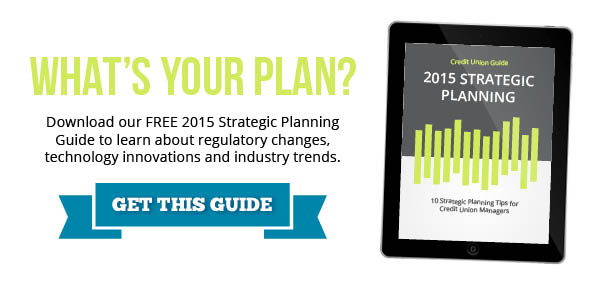Strengthening a board is not something you do once a year. It's a never ending task. It's like being a parent. You are never done being a parent, and you are never done strengthening a credit union board. The board building cycle consists of seven steps — however there is no start or finish. It's a circle, and you can start anywhere.
Step 1: Identify the traits of successful board members
Here are some common traits of good board members:
- A commitment to the mission
- An understanding of strategic challenges facing the credit union and industry
- Financial expertise
- Access to resources (financial, political, intellectual, reputational, social capital)
- Creative, inquisitive minds
- A willingness and ability to be active participants

Step 2: Cultivate potential directors
You should look at your membership in a different way to find new directors. Identify sources of board members with the needed characteristics. Where do you go to look for the kind of board members you need and want? Some suggested avenues are to look at your sponsor organization or your advisory board, and network within your circle.
Develop relationships with those who have been identified as potential board members. Get to know them, get them interested and keep them informed.
Step 3: Recruit
Try this exercise: Take two minutes to outline what you would say to a person to convince them to run for election to your board. For example:
- Describe why a prospective member is wanted and needed
- Describe expectations and responsibilities
- Invite questions
- Don't minimize the requirements
- Make sure they understand and support the mission
- Elicit interest and preparedness to serve
Do this exercise from time to time with the entire board.
Step 4: Orient
Orient new directors to the credit union, its services, history, bylaws, pressing issues, finances, facilities and organization chart.
Also orient them to the board itself with:
- Recent minutes
- An overview of the committees
- Board member responsibilities
- A list of board members and key staff members
Hold orientation meetings, distribute a board handbook, and include a credit union site visit and tour. Also consider a board mentoring program where an experienced director mentors a new director.
The CEO or chairman should also follow-up with new directors to see if they have any questions or need any additional information.
Step 5: Involve
After you find new volunteers, keep them involved. Don't put new people on a committee that only meets twice a year. To get them involved:
- Discover their interests and availability
- Get them involved in a committee or task force
- Assign them to a buddy or mentor
- Solicit and act on feedback
- Hold everyone accountable
- Express appreciation for work well done
Step 6: Educate
Every board meeting should include something educational. If you can't keep learning, you will be falling behind.
- Provide information about public policy issues related to credit union and about trends in the financial services industry.
- Promote exploration of issues facing the organization and the community served or potentially served by the credit union.
- Make board members active participants in their own learning. Require them to get some sort of continuing education. Require a report from each conference they attend.
Step 7: Evaluate
- Engage the board in assessing its own performance
- Encourage individual self assessment
- Identify ways in which to improve
Credit union board members deserve to have engaging and rewarding experiences.Credit unions deserve to have the leadership and support of a board that brings their best to every meeting and to the organization.
The board self-assessment process is a great way to see whether your board and your organization are meeting these mutual goals. However, providing your board with a board self-assessment tool to fill out is just the starting point. This is a long journey that should proceed at a steady pace. Ideally, every step along the way will result in a stronger board and a stronger organization.
If you have any questions or would like to know more about how we can assist you in building a more effective board, feel free to visit us at www.curesources.coop/onbalance.
By Karen Houston-Johnson, VP, Credit Union Resources, Inc.
%20formatted-1.png?width=2528&height=739&name=SIGNiX%20Logo%20Main%20(white)%20formatted-1.png)

